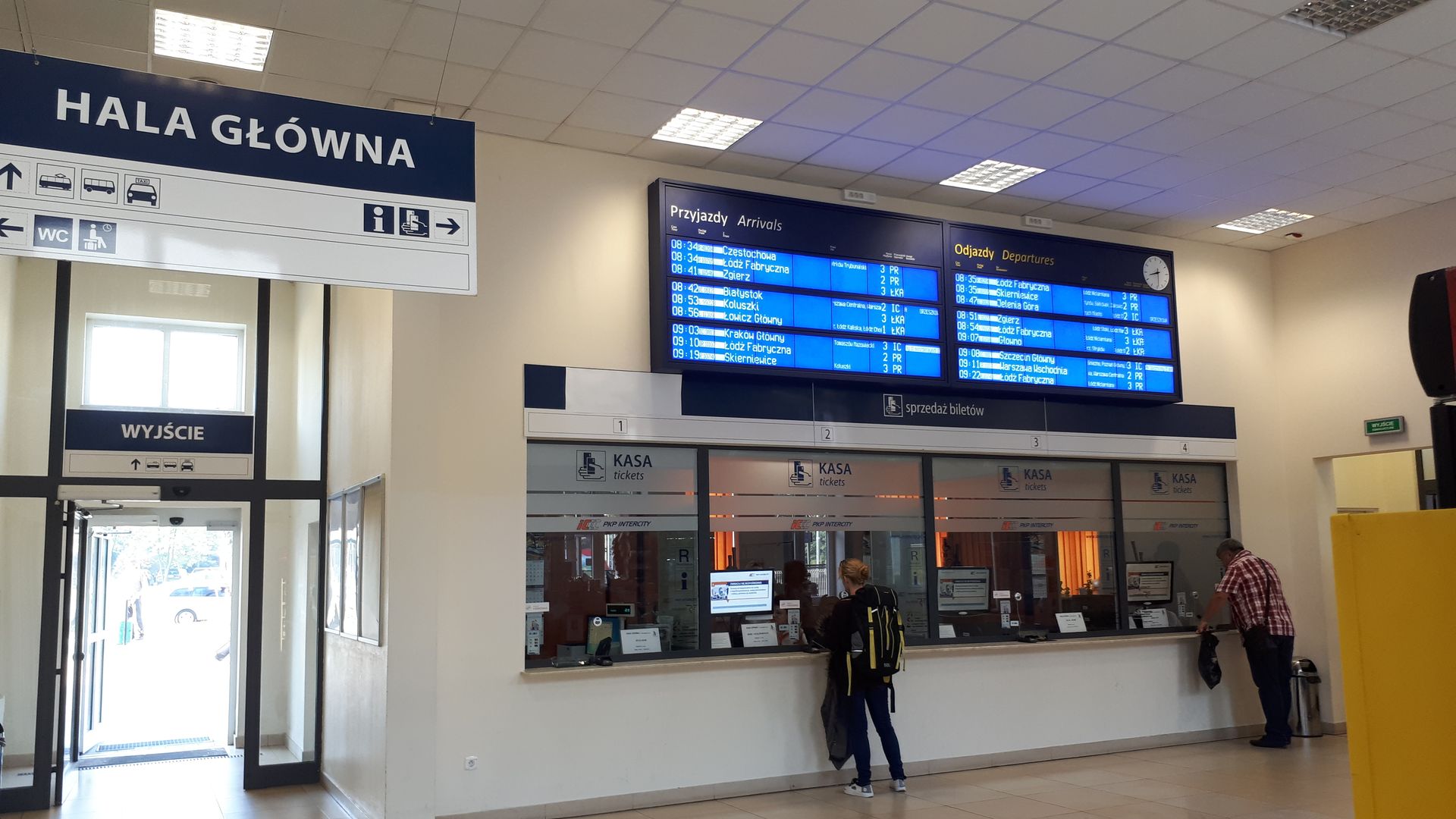Łódź Widzew
6

Overview
Łódź Widzew is the third largest railway station in Łódź and an important junction station on the route from Łódź Fabryczna to Koluszki, classified as an agglomeration station by PKP (Polish State Railways). The station was built between 1901 and 1903 as part of a newly constructed rail bypass to relieve the city center from railway traffic, with connections to the Chojny and Łódź Kaliska stations. It also had direct passenger links to Zgierz and Kutno, which were discontinued in 1988. In 1915, after Widzew was incorporated into Łódź, the station was renamed to its current name. The electrification of the line took place between 1954 and 1970, and the station's surroundings changed significantly in the 1970s due to the expansion of the Widzew Wschód housing estate. In 1989, the tracks along the hump yard were dismantled, and in 1993, a commemorative plaque was unveiled in honor of the scouts who died in 1939. The station building was renovated in 2003 to mark the 100th anniversary of the station; one of the station buildings was demolished, and commemorative plaques for the station's builders were unveiled. Between 2010 and 2012, a comprehensive modernization of the station was carried out, increasing its functionality, including the number of ticket counters and accessibility to toilets for people with disabilities. The station now has three platforms, covered and equipped with elevators for people with mobility impairments. In 2014, Łódź Widzew became the technical base for the Łódź Agglomeration Railway. After December 11, 2016, the station gained importance as a key stop on routes to Łódź Fabryczna. In terms of public transport, Widzew is served by various bus lines and is also interestingly located near tram stops. Local bus lines, including night services, provide direct access to the station, highlighting its role as a key transport hub in Łódź. An interesting fact is that until 2003, a historic steam locomotive Tkh 5376 "Ferrum" was located on the platform, which was later relocated. Thanks to the modernizations, the station now features modern equipment, making it one of the most advanced in the region.
Location
Tickets
Powered by GetYourGuide
2025 Wizytor | All Rights Reserved